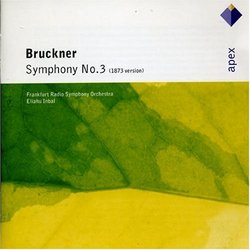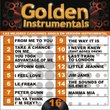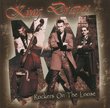| All Artists: Bruckner, Inbal, Frankfurt Radio Sym Orch Title: Bruckner: Sym No 3 Members Wishing: 0 Total Copies: 0 Label: Wea Apex Classics UK Original Release Date: 1/1/2006 Re-Release Date: 5/24/2006 Album Type: Import Genre: Classical Style: Number of Discs: 1 SwapaCD Credits: 1 UPC: 825646000524 |
Search - Bruckner, Inbal, Frankfurt Radio Sym Orch :: Bruckner: Sym No 3
 | Bruckner, Inbal, Frankfurt Radio Sym Orch Bruckner: Sym No 3 Genre: Classical
|
Larger Image |
CD DetailsSimilar CDs
|
CD ReviewsInbal scores again with Bruckner's first thoughts Santa Fe Listener | Santa Fe, NM USA | 04/24/2007 (5 out of 5 stars) "In 1982 Elihu Inbal made an impression on the clasicla music world with a first-ever recording of Bruckner's original verison of the Fourth Sym. and a smaller impression with the 1873 version of the Third. Both are exciting and well recorded. Inbal made a specialty of Bruckner, and he seems intent on making converts to both original works. Since then quite a few rival recordings have appeared. I've heard the 1873 Third from Norrington (EMI0, who is briks and as ever oriented toward "period" style, as well as its opposite, Georg Titner's measured, grave reading on Naxos. To my ears Inbal makes the strongest case for a work that began its life at a sprawling 65 min. until the composer pruned, compressed, and ended up with a finished result in 1888 that is about ten minutes shorter.
The compression was a great improvement in terms of coherence and structure. Bruckner was constantly learning his craft as an architect, and in his originality he had few predecessorts to follow. The Third, as originally conceived, still has rough joins and unconvincing transitions. Its themes extend beyond their intrinsic interest, and the devlopemnts lack Bruckner's mature instinct for huge spaces. In its later editions, the Third isn't simply compressed but has benefited in al these departments. Yet there are ways to enjoy the orignal, less coherent and vastly sprawling piece. The key for me was not to expect coherence but to let the music uncoil at its leisurely winding pace, like a river. At 23 min., the first ovement needs much more interesting thematic material than it has (Tintner tries for static profundity by stretching matters out to 30 min., Norrington takes the opposite tack and speeds the movement up to 18 min.) I like Inbal's middle way, which has a satisfying sense of depth with forward momentum to keep me from wandering away. The same hold sture in each movement, but in the endNorrington, Tintner, and INbal are each trying a new way to unlock an old puzzle, and I appreciated all their solutions." |

 Track Listings (1) - Disc #1
Track Listings (1) - Disc #1
